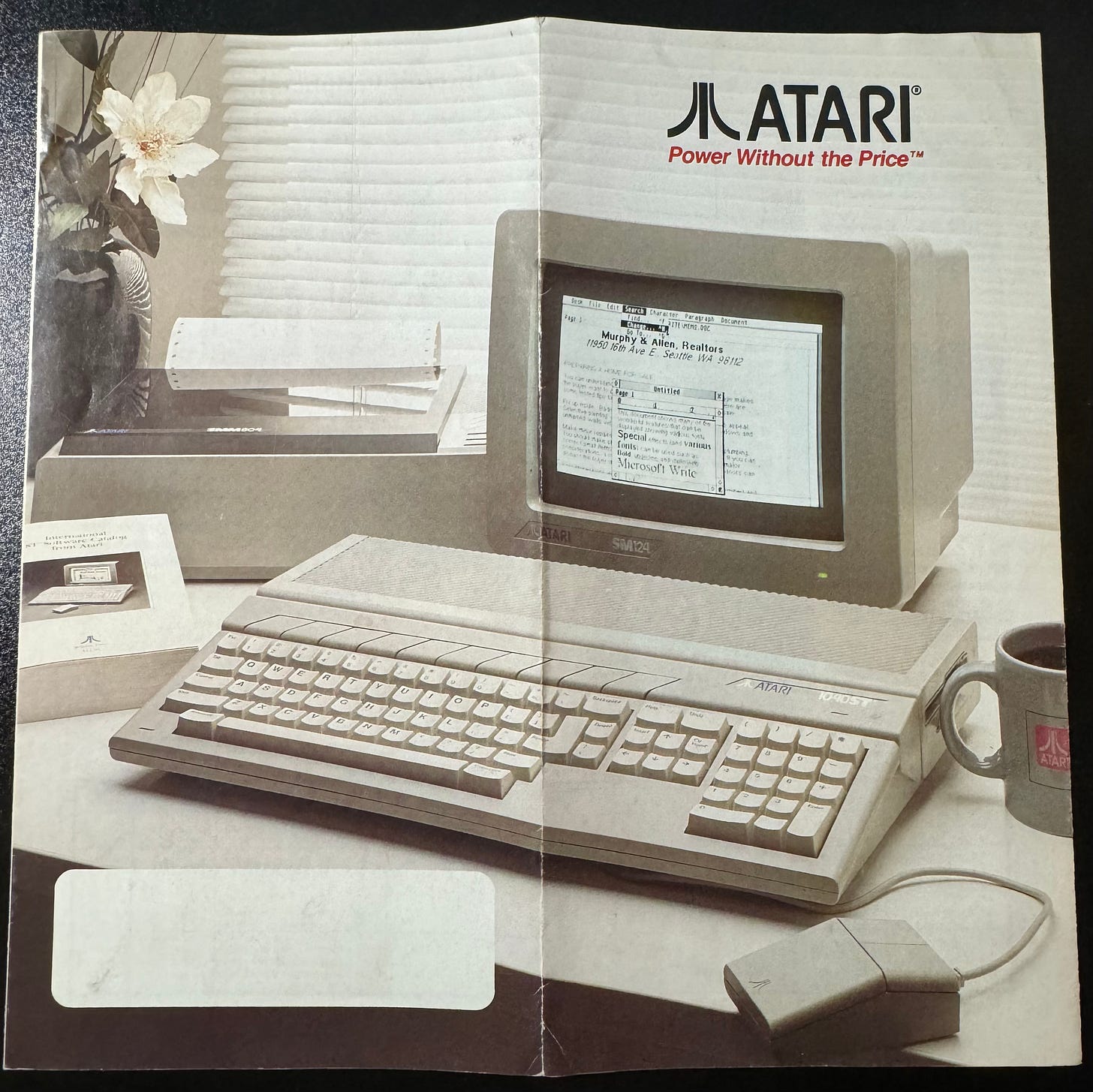Commentary on an Atari ST Marketing Brochure
I’m not sure where I got this, but I have an Atari ST marketing brochure from 1987. I think it is rather interesting and worth a closer look. I didn’t write much about marketing in my Atari ST: What went wrong post, but looking at this brochure might give us a sense of how Atari thought it should be marketing the Atari ST.
1986 was the heyday of the Atar…


